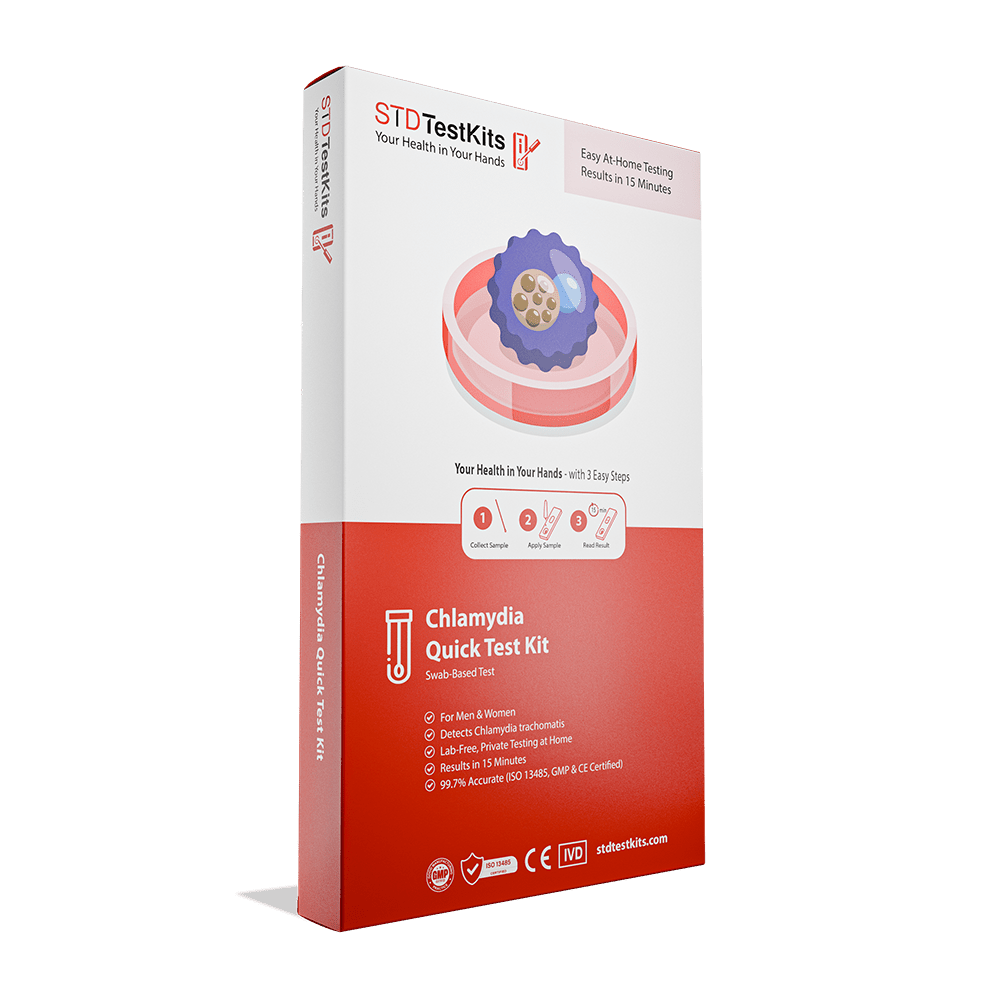The Numbers Don’t Lie Why Non-Sex Workers Often Have Higher Undiagnosed STD Rates
Quick Answer: A chlamydia vaccine is currently in Phase 1/2 human trials as of 2025. Led by Sanofi, this mRNA candidate received FDA Fast Track designation and could be available by 2028 if trials succeed.
The STD That Was Ignored for Decades
When people hear “vaccine,” they think of polio, HPV, or COVID, not chlamydia. But with over 1.6 million cases reported annually in the U.S. alone (and likely millions more undiagnosed), chlamydia isn't just common, it's chronic. Unlike gonorrhea, which has developed terrifying antibiotic resistance, chlamydia quietly damages reproductive organs with no symptoms at all in up to 70% of women and 50% of men.
So why no vaccine? According to a 2024 review in The Lancet Infectious Diseases, the answer is shame, funding, and the uncomfortable politics of sex education. STIs historically receive less research investment compared to other infectious diseases, and chlamydia, despite its scale, is still seen as “less serious” because it’s treatable. That’s a dangerous myth. Treatable doesn’t mean harmless.
And worse, stigma plays a massive role. Vaccines for “sexual” diseases, especially ones affecting women disproportionately, have to fight moralistic assumptions before they ever reach clinical trials. Just ask the scientists behind the HPV vaccine, who spent years fending off critics who thought vaccinating teens would encourage sex. We're watching the same cycle unfold with chlamydia now.

People are also reading: STD Testing Before the Wedding: What Couples Should Really Talk About
Inside the 2025 Breakthrough: Sanofi’s mRNA Vaccine
In March 2025, Sanofi said that the U.S. FDA had given its investigational mRNA chlamydia vaccine Fast Track status. This gives the program quicker timelines, priority reviews, and more frequent feedback from regulators, which speeds up development.
The vaccine is based on the same technology that made the COVID-19 vaccines work. The mRNA platform teaches your immune system to recognize and kill Chlamydia trachomatis bacteria before they can take hold by encoding for certain proteins. The Phase 1/2 trial will test the vaccine on healthy adults between the ages of 18 and 29 at several sites around the world.
Participants will get three doses and be watched for 18 months to make sure they are safe, that their antibodies are working, and, in the end, that they are protected in the real world. The trial is expected to end around 2028, according to Pharmacy Times. This could be the first licensed vaccine for chlamydia in the world, and it could mark the start of a new era in STI prevention.
The Other Front-Runners: CTH522 and the Mouse That Didn’t Get Sick
Before Sanofi came in with mRNA, another chlamydia vaccine was quietly making waves in Europe. The Statens Serum Institut in Denmark made this vaccine, which is called CTH522. It finished early-stage human trials (Phase Ia/Ib), which showed that it could make strong antibody and T-cell responses without causing serious side effects.
But the animal model was what really got people excited. Researchers used CTH522 and a new adjuvant called CAF01 to immunize mice in a 2025 study that was published in npj Vaccines. What happened? Not only did the mice become immune, they also couldn't get sick again, which is a big step forward in the science of chlamydia vaccines. The trial demonstrated elevated levels of IgA and IgG antibodies in the genital tract, vigorous T-helper cell activity (Th1/Th17), and, importantly, the absence of inflammatory tissue damage.
This is important because previous attempts to make a chlamydia vaccine were stopped because they caused more serious infections in some people. The CTH522 with CAF01 as an adjuvant seems to avoid that problem, at least in rodents, by being both safe and effective. Next, there will probably be human efficacy trials, but progress is slow without support from big drug companies.
Why Did It Take So Damn Long?
Short answer? Chlamydia doesn’t kill you, it just ruins your life.
That’s how a researcher at the CDC described it during a 2024 STI conference. Unlike HIV or syphilis, which can be fatal or extremely visible, chlamydia is a "silent" disease. Most people don't feel anything. They don't notice it. And they often don't get tested until it's already caused long-term damage, especially in people with uteruses, where it can lead to infertility, PID (pelvic inflammatory disease), and chronic pain.
Plus, STDs still carry a moral stink. Chlamydia doesn’t get the same urgency as polio or measles because it’s linked to sex, particularly young sex. And when the public narrative around STDs centers on blame instead of biology, vaccine funding dries up. One study published in the Sexually Transmitted Diseases journal found that STI-related research receives less than 2% of total infectious disease grant funding.
It’s not science that’s lagging, it’s stigma.
Why This Vaccine Could Actually Work (And What You Can Do Now)
Here’s the good news: If the Sanofi mRNA candidate works, it could revolutionize how we prevent chlamydia, especially in high-risk groups like teens, queer folks, and those with limited access to testing. A vaccine that’s safe, effective, and built on tech we now trust post-COVID could reduce transmission dramatically within a decade.
But here’s the catch: A vaccine doesn’t exist yet. And even if it hits the market in 2028, access will take time. That means prevention still depends on what you do today:
- Test regularly, especially if you’re under 30 or have new/multiple partners
- Use protection, even for oral and anal sex
- Talk openly about STI status and testing with your partners
- Know your body, burning, weird discharge, pelvic pain, or even nothing at all can still mean infection
Chlamydia reinfection is common, and many people don’t even know they’ve had it. That’s why easy, discreet testing remains your best defense. This at-home combo STD test kit checks for multiple infections, including chlamydia, so you don’t have to play guessing games with your body.

People are also reading: First Time Getting an STD Test? Here’s Exactly What to Expect
Case Study: “I Got Chlamydia Before I Ever Had Vaginal Sex”
Ty, 21, identifies as queer and didn’t think he was “at risk” because he hadn’t had what most people define as “real sex.” His first STI test was part of a routine college clinic screening, he almost skipped it.
“I wasn’t sleeping around. I’d just done oral a few times. So when they called to say I had chlamydia, I thought it was a mistake.”
It wasn’t. Ty tested positive for throat chlamydia, likely from oral contact. The infection cleared with antibiotics, but the shame stuck.
“I told my roommate I had strep. I didn’t want anyone to know. Looking back, I hate that I felt that way. It’s just an infection, not a personality trait.”
Ty’s story isn’t rare. According to the Planned Parenthood, chlamydia can infect the throat, rectum, or genitals, even without penetrative sex. And oral chlamydia often has no symptoms. This is why education, testing, and normalization matter as much as a future vaccine.
Sex Ed Still Isn’t Talking About This
Let’s be blunt: most American sex ed doesn’t cover oral STDs, asymptomatic infections, or STI reinfection. It doesn’t talk about queer sex, testing after a hookup, or how to talk to your partner when something feels off. And it definitely doesn’t tell you there’s no chlamydia vaccine.
That’s by design. Abstinence-first policies, moral panic over teen sexuality, and state-by-state curriculum battles mean millions graduate without the language, or the science, to understand their own sexual health risks.
According to a 2024 survey by the Guttmacher Institute, less than 50% of U.S. teens receive education on STIs that includes same-sex relationships, and only 28% are taught about the existence of asymptomatic infections. Combine that with internet misinformation, hookup culture, and social shame, and you get a public health crisis hiding in plain sight.
The arrival of a vaccine won’t fix that. But it might force us to finally talk about the real reasons people delay testing: fear, confusion, and feeling like they “should’ve known better.”
FAQs
1. Wait… there's still no vaccine for chlamydia?
Yup. Wild, right? Despite being the most common bacterial STD, there's no approved vaccine yet. The first real contender, a fancy new mRNA one, is just now in early trials. Science moves slow, especially when shame gets in the way of funding.
2. Why hasn’t there been one this whole time?
Short version? STDs don’t get the research money they deserve, especially when they affect young, queer, or femme bodies. Chlamydia doesn't always show symptoms, doesn't kill you, and is treatable. That combo made it easy to ignore, even as it quietly wrecked people’s reproductive health.
3. Is this new vaccine actually promising?
Super promising. It’s built on the same mRNA tech that gave us the COVID vaccines. Early trials are focused on safety and immune response. If all goes well, we could see it by 2028. That’s not tomorrow, but it’s closer than ever before.
4. Can I still get chlamydia even if I’m careful?
Yes. Even if you use protection most of the time. Even if you don’t have “a lot” of partners. Even if it was just oral. This isn’t about being reckless, it’s about bacteria doing what bacteria do. That’s why testing is a must, not a judgment.
5. What if I don’t have symptoms?
Most people don’t. Especially folks with vaginas. That’s why chlamydia gets called the “silent” infection. No burn, no itch, no clue, until months later when you’re facing fertility issues or pelvic pain. That’s not meant to scare you. It’s meant to say: test early, test often.
6. Can you get it from oral or anal sex?
You sure can. Chlamydia doesn’t care about labels, it just needs mucous membranes. That means mouth, throat, genitals, rectum. If it’s wet and warm, it’s vulnerable. Barriers help, but testing fills the gaps.
7. If I’ve had chlamydia before, am I immune now?
Sadly, no. This isn’t chickenpox. You can get it again, especially if your partner wasn’t treated, or you’re exposed through someone new. No shade. It just means vigilance > shame.
8. Will the vaccine be for everyone or just high-risk groups?
Probably starts with high-risk folks, think under-30, sexually active, anyone with recurring infections. But the hope is to expand access once it’s proven safe and effective. Like HPV vaccines, it could become part of standard preventive care.
9. Can I test myself at home?
Absolutely. There are legit, FDA-approved at-home chlamydia tests you can order online. Like this one here. No awkward clinic waiting room, no side-eyes. Just you, your sample, and peace of mind.
10. Is chlamydia really that serious?
It can be. Left untreated, it can cause infertility, chronic pain, and complications in pregnancy. For people with penises, it can lead to urethral infections and reactive arthritis. That’s why prevention, until a vaccine lands, isn’t optional. It’s self-care.
You Deserve Better Than Silence
There’s no vaccine for shame. But there could soon be one for chlamydia, and that’s a huge win. Still, prevention doesn’t start in a lab. It starts in bedrooms, bathrooms, DMs, and clinics. It starts when someone says, “I think we should both get tested.”
If you’re sexually active in any way, oral, vaginal, anal, fluid-sharing, or just exploring, you deserve protection, clarity, and care. That means testing often, using barriers, and ditching the guilt when something goes wrong. You’re not reckless. You’re real.
Sources
1. FDA Grants Fast Track Designation to Sanofi's mRNA Chlamydia Vaccine (EATG)
2. FDA Fast-Tracks Sanofi’s mRNA Chlamydia Vaccine Candidate (Pharmaceutical Executive)
3. Chlamydia Vaccine Candidate Gets Fast-Tracked (Vax-Before-Travel News)
4. Phase 1/2 Study of Chlamydia mRNA Vaccine (clinicaltrials.gov)







